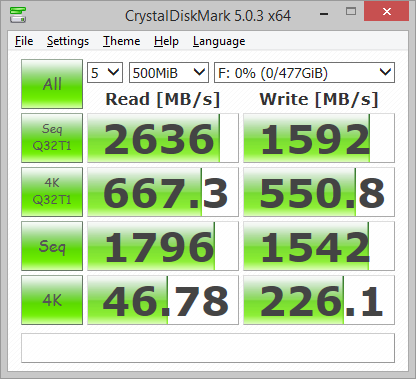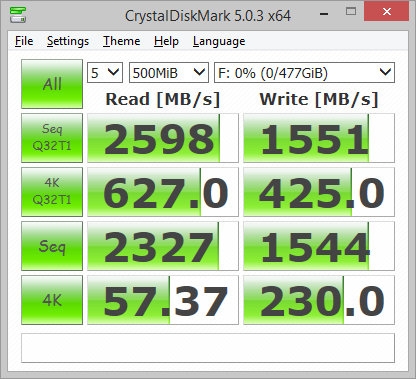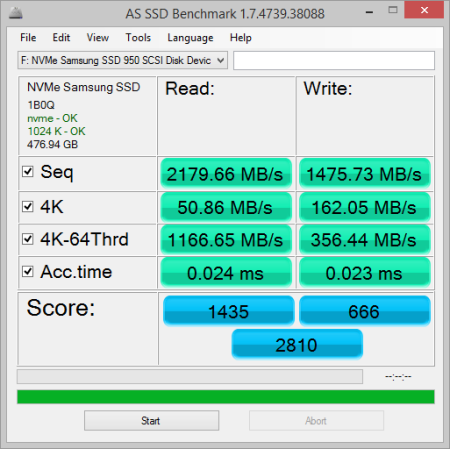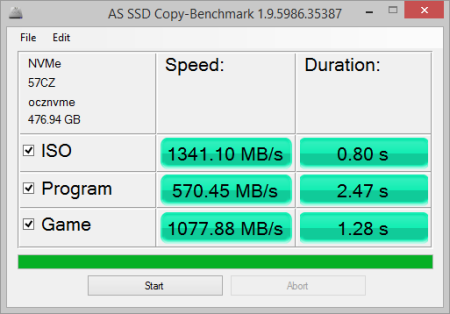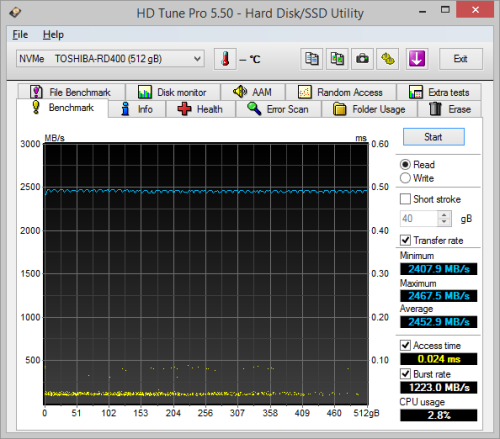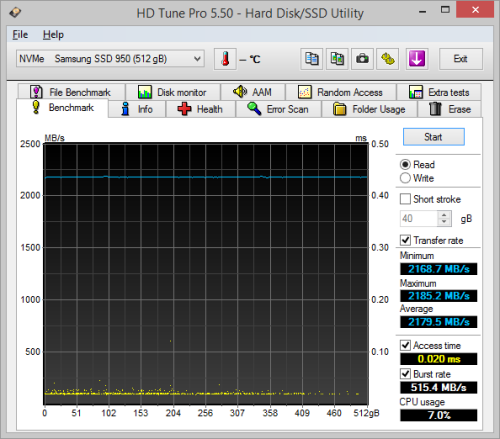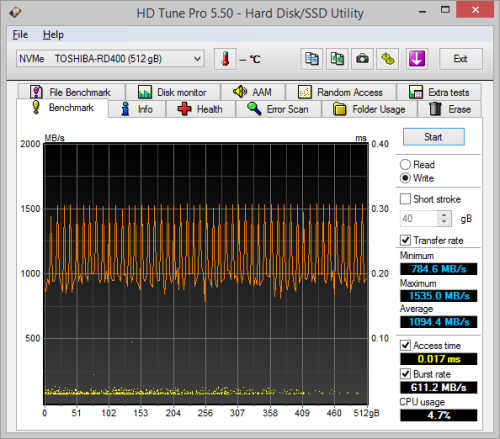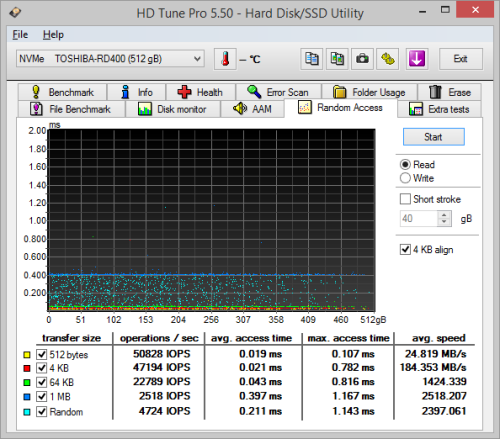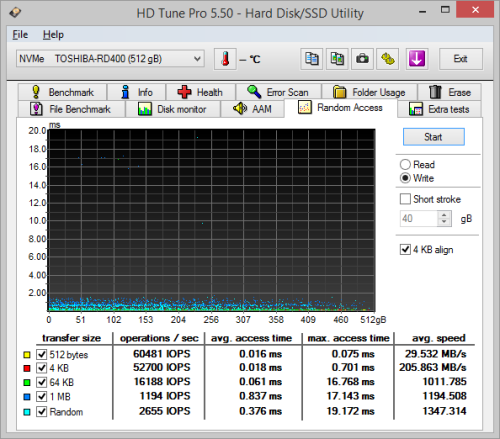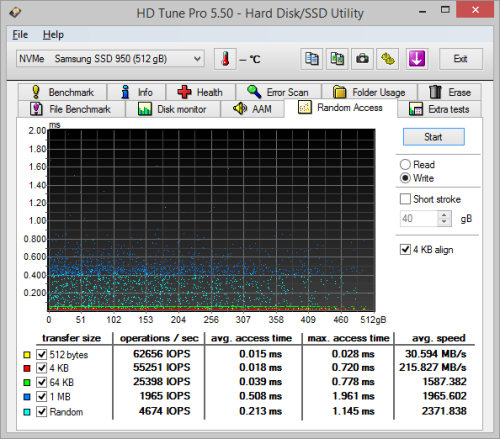

Model: Toshiba OCZ RD400 512GB PCIe NVMe M.2 Solid State Drive
Manufacturer: Toshiba Corporation
Provided By: Toshiba America
Toshiba has been a leader in the consumer electronics industry for as long as I can remember. Founded more than 70 years ago, this Japanese company manufacturers everything from tiny electronic components to consumer products like televisions, Blu-ray players and personal computers. Toshiba is no stranger to the storage industry either. The company designs and manufactures high-quality flash memory-based storage solutions, SSDs and hard disk drives for the consumer and enterprise markets.
To strengthen their position in the SSD market, Toshiba purchased the assets of OCZ Technology's SSD business in December of 2013. The business was soon re-launched as an independently-operated subsidiary named OCZ Storage Solutions. OCZ has continued to operate this way until recently, when Toshiba fully absorbed the business, turning the subsidiary into one of its sub-brands. To reduce the overlap between product lines, OCZ also pulled out of the enterprise market and will function as a consumer-only brand.
The first drive launched under Toshiba's new OCZ sub-brand is the RD400. Designed with enthusiasts and hard-core gamers in mind, the RD400 is the company's first consumer-ready Non-Volatile Memory Express (NVMe) SSD. This NVMe 1.1 compliant, M.2 form factor drive is powered by Toshiba's TC58NCP070GSB controller and is available with up to 1TB of their 15nm MLC NAND flash. With its PCIe Gen3 x4 lane interface, the RD400 also shatters the traditional SATA bottleneck by delivering over four times the performance of SATA SSDs.
The RD400 is available in 128GB, 256GB, 512GB and 1TB capacities. For this review, OCZ sent us the 512GB version of the drive which is capable of delivering up to 2,600 MB/s sequential read and 1,600 MB/s sequential write speeds as well as up to 190,000 random read and 120,000 random write IOPS.
| Toshiba OCZ RD400 512GB PCIe NVMe M.2 Solid State Drive | |||||||||||||||||||||||||||||||||||||||||||||
General Specifications
Performance
Reliability
Power Consumption
Environmental
Dimensions and Weight
Other Features
|
Needless to say, this is only a taste of what the RD400 has to offer. To give you an idea of what to expect, we'll take a closer look at Toshiba's new NVMe SSD and then see how well it performs. Does the RD400 have what it takes? Can it deliver the performance and features that we've come to expect from the OCZ brand? Keep reading as we find out.
The RD400 comes packaged in an attractive gray, black and blue box. While there aren't a lot of details on the front, the back of the box advertises some of the drive's key features including its M.2 2280 form factor, PCIe 3.0 x4 interface, support for NVMe and Toshiba MLC NAND flash memory.


The RD400 is available with or without a PCIe adapter add-in-card. For this review, Toshiba sent us the version with the card, which includes both full and half height brackets. The drive also comes with a small instruction manual as well as a sheet of paper with information on how to reach Toshiba's tech support.
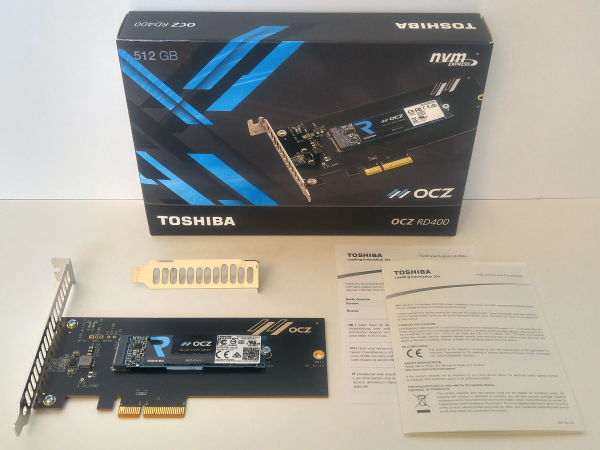
Physical Features:
The RD400 uses the 2280 form factor for M.2 (NGFF) SSDs. The 512GB version of the drive measures 80 x 22 x 3.58 mm and tips the scales at a mere 7.2g. The drive also has an "M key" edge connector which provides PCIe SSDs with up to 4x lanes of bandwidth.

The RD400 uses Toshiba's TC58NCP070GSB NVMe 4 lane controller. At the moment, very little is known about this controller. However, we can assume that like Toshiba's other controllers, it's based on a design from another company like Marvell.


For the 512GB version of the RD400, Toshiba used their own 15nm MLC NAND flash chips. Looking at the pictures above, you can see that there are two 256GB NAND flash packages on the top of the PCB. The drive also has a single Samsung 512GB LPDDR3 DRAM memory chip that is used for caching.

If your computer doesn't have an M.2 slot, it's worth getting the RD400 with the PCIe adapter add-in-card. It is well constructed and it looks nicer than many of the cards I've seen.
The test system used in this review was an HP EliteDesk 800 G1. The computer is equipped with an Intel Core i5-2400 CPU, 16GB of DDR3 1333MHz memory, Plextor PX-256M5P 256GB SSD, PNY Quadro K600 1GB PCIe graphics card and Intel 1217-LM gigabit network card. For the operating system, I installed a fresh copy of Windows 8.1 Enterprise.
To test the performance of Toshiba's OCZ RD400 SSD, I ran a series of benchmarks using CrystalDiskMark, HD Tach RW, ATTO Disk Benchmark, AS SSD, HD Tune Pro, Anvil's Storage Utilities, Iometer and PCMark 8. For comparison, I've also included test results from the Samsung 950 PRO, Plextor M6V, Crucial BX200, OCZ Trion 100, Kingston HyperX Savage, Crucial MX200, OCZ Vector 180, Kingston BX100, Samsung 850 EVO M.2, Samsung 850 EVO mSATA, AMD Radeon R7, Silicon Power Slim S80, Samsung SSD 850 EVO, OCZ ARC 100, SanDisk Ultra II, Kingston MX100, SanDisk Extreme Pro and Samsung SSD 850 PRO.

As I mentioned earlier, the RD400 uses Toshiba's TC58NCP070GSB controller chip. While there are a few unexplained dips in the graph, the drive performs equally well with incompressible and compressible data.
CrystalDiskMark 5.0.3:
First, I ran a few quick tests using CrystalDiskMark. This benchmark tool measures the performance of a storage device by testing its sequential read and write speeds as well as its random read and write speeds using blocks 512K and 4K in size.
According to Toshiba, the 512GB RD400 is capable of reading at 2,600 MB/s and writing at 1,600 MB/s. Looking at the screenshot above, you can see that the drive had no problems reaching its rated speed when reading, but came up a bit short in CrystalDiskMark's sequential write speed test.
HD Tach RW 3.0.4.0:
Next, I used HD Tach to test the RD400's read, write and burst speeds as well as its seek times and CPU usage.

Toshiba OCZ RD400 512GB
The RD400's performance was hit and miss when tested with HD Tach. While the drive was able to write at 1,380.4 MB/s, its read speed averaged out at only 899.9 MB/s.
ATTO Disk Benchmark 2.46:
I also used ATTO Disk Benchmark to test the RD400's sequential read and write speeds. The tests are run using blocks ranging in size from 0.5KB to 8192KB and the total length set to 256MB.
When tested with ATTO, the RD400's read speeds topped out at about 2,710 MB/s and its write speeds at 1,632 MB/s.
AS SSD:
AS SSD is a relatively new benchmark designed specifically for solid state drives. The application contains five synthetic tests used to determine the sequential and random read and write performance of a drive.
AS SSD also includes a copy benchmark. This test copies an ISO (two large files), program (many small files) and game (small and large files), returning the speed and duration of each.
HD Tune Pro 5.50:
Next, I ran a series of tests using HD Tune Pro. This hard disk utility measures a drive's performance by testing its sequential read and write speeds as well as its access time, burst rate and CPU usage. For this review, I'm also going to use it to benchmark the RD400's random read and write speeds, random access times and the number of operations per second.
The RD400 performed very well when benchmarked with HD Tune. The drive had average read and write speeds of 2452.9 MB/s and 1094.4 MB/s, respectively, and a burst rate of 1223.0 MB/s when reading.
The RD400 didn't disappoint when doing random reads and writes. When reading 4KB blocks, the drive reached 47,194 IOPS and had an average speed of 184.353 MB/s. It was even faster when writing, reaching 52,700 IOPS with an average speed of 205.863 MB/s.
Anvil's Storage Utilities:
Anvil's Storage Utilities is another new benchmark designed with SSDs in mind. The standard storage benchmark measures a drive's performance by testing its transfer speeds, access times and IOPS.

Iometer:
Lastly, I ran a series of tests using Iometer. This tool can be configured to benchmark a number of things. In this case, I used it to measure the RD400's read and write speeds and the number of operations per second. The tests were run using random bytes and a queue depth of 3.

The RD400's performance was very similar to what we saw in our other tests. The drive was able to read at 2545.66 MB/s and write at 1476.35 MB/s.

The RD400 also performed very well when doing random reads and writes. In our tests, the drive was able to read at 259.35 MB/s and write at a whopping 716.41 MB/s.

According to Toshiba, the 512GB RD400 is capable of up to 190,000 IOPS when reading and 120,000 IOPS when writing 4K blocks. In our tests, the drive reached 66,290 random read IOPS and 183,402 random write IOPS. The RD400 performed even better at higher queue depths. With the queue depth set to 32, it reached 178,139 random read IOPS and 197,261 random write IOPS.
PCMark 8 - Storage Test:
PCMark 8 is a complete benchmark for Windows. It includes five benchmark tests, each designed around a specific scenario. The storage benchmark measures drive performance using real-world traces recorded from Adobe Creative Suite, Microsoft Office and a selection of popular games.

PCMark 8 also includes a consistency test which measures the performance consistency and degradation tendency of a storage system. The test reports the performance level at the start, the degraded steady-state and the recovered state as well as the number of iterations required to reach the degraded state and the recovered state. For this test, we are focusing on the Adobe Photoshop (Heavy) trace and will look at both the bandwidth and latency of the drive


The RD400 did quite well throughout PCMark's consistency test. While the average bandwidth dropped below 400 MB/s during the degradation and steady state phases, it was still faster than the Samsung 950 PRO. More importantly, the RD400 had no problems bouncing back during the recovery phase.
TRIM Performance:
While SSD's offer many benefits, there are some downsides to using flash memory. One of the biggest issues people run into is performance degradation. Over time, an SSD will run out of fresh blocks and will have to write over data the file system has marked as deleted. This procedure is very complicated and can slow an SSD's write speeds considerably.
To fix this problem, most manufacturers have added TRIM support to their SSDs. The TRIM command allows an operating system, such as Windows 7, to tell an SSD which data blocks are no longer in use. Using this information, the drive pro-actively erases these blocks and adds them to the free block pool.

To test the RD400's TRIM and garbage collection functions, I first put the drive in a "dirty" state. I used Iometer to fill the entire drive and then ran a random write test for 30 minutes. Looking at the screenshot below, you can see that the RD400's average read and write speeds dropped to 505.4 MB/s and 344.1 MB/s, respectively.

Toshiba OCZ RD400 - Dirty
I let the computer sit for about 30 minutes and then reran the test. The drive's average read speed jumped up to 723.2 MB/s. However, its write speed lagged behind, averaging out at only 355.8 MB/s.

Toshiba OCZ RD400 - After TRIM
Lastly, I used Toshiba's SSD Utility to perform a secure erase on the RD400. With the drive wiped clean, it had average read and write speeds of 1181.8 MB/s and 445.9 MB/s, respectively.

Toshiba OCZ RD400 - Secure Erased
Final Thoughts:
Toshiba has really knocked one out of the park with its new OCZ-branded RD400 NVMe SSD. Designed for cutting-edge notebooks and PCs, this M.2 form factor SSD is powered by Toshiba's TC58NCP070GSB controller and is available with up to 1TB of the company's 15nm MLC NAND flash. The RD400 also supports the NVMe protocol and is equipped with a PCIe Gen3 x4 lane interface for enhanced latency and more than four times the bandwidth of SATA SSDs. In our sequential read and write tests, the 512GB version of the RD400 was able to read at speeds as high as 2,710 MB/s and write at speeds in excess of 1,592 MB/s. The drive also took the top spot in our random write tests, producing more than 183,000 IOPS at low queue depths.
Based on performance alone, it's hard to choose between the RD400 and its closest competitor, the Samsung 950 PRO. Looking beyond that, you can see that the RD400 does have some advantages. Where the 950 PRO is only available in 256GB and 512GB capacities, Toshiba's new drive is offered in four capacities ranging from 128GB up to a massive 1TB. The RD400 can also be purchased by itself or with a PCIe add-in-card. The card only adds about $20 to the overall price and is an easy way to add a M.2 slot to your desktop computer. The RD400 has its downsides as well. In particular, the drive's endurance rating is lower than the 950 PRO and it lacks support for hardware based encryption.
The RD400 is available now in 128GB, 256GB, 512GB and 1TB capacities. Prices on Amazon currently range from $120 up to $790, with the 512GB version reviewed here going for about $330.

Highs:
- Available in 128GB, 256GB, 512GB and 1TB capacities
- PCIe 3.0 x4 interface with NVMe protocol
- Excellent sequential and random read and write speeds
- Performs equally well with compressible and incompressible data
- Small M.2 2280 form factor
- Supports TRIM and idle time garbage collection
- Works with Toshiba's SSD Utility software
- Available with a PCIe add-in-card
- Backed by 5 year advanced warranty program
Lows:
- Does not support hardware based encryption
- More expensive than SATA SSDs
